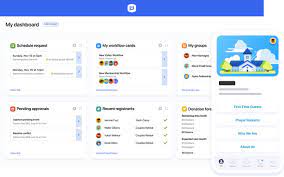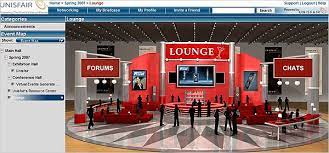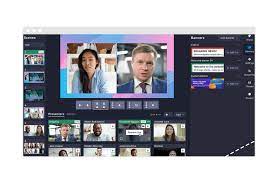The Benefits of Church Event Software
Churches are not just places of worship; they are vibrant communities that host a variety of events and activities. From weekly services to special programs, managing these events can be a complex task. That’s where church event software comes in.
Church event software is a powerful tool that helps streamline the planning and organization of various church events. It offers numerous benefits that can enhance the efficiency and effectiveness of event management within a religious community. Here are some key advantages:
Simplified Event Registration
Gone are the days of paper registration forms and manual data entry. With church event software, attendees can easily register for events online, saving time and effort for both organizers and participants. The software allows for customizable registration forms, enabling churches to collect specific information tailored to each event.
Efficient Communication
Effective communication is crucial when it comes to organizing church events. Church event software provides a centralized platform for sending out event invitations, reminders, and updates via email or text messages. This ensures that attendees receive timely information, reducing the chances of miscommunication or missed opportunities.
Volunteer Management
Churches heavily rely on volunteers to make their events successful. Church event software simplifies volunteer management by allowing organizers to create volunteer schedules, track availability, and assign tasks efficiently. This ensures that volunteers are properly utilized and appreciated for their contributions.
Financial Tracking
Managing finances is an essential aspect of any church event. Church event software often includes features that enable organizers to track registration fees, donations, and other financial transactions associated with an event. This helps maintain accurate financial records and facilitates transparent reporting.
Attendance Tracking
Knowing who attended an event is crucial for follow-up purposes and future planning. Church event software provides tools to easily track attendance, allowing organizers to generate reports and analyze participation trends. This information can help churches better understand their congregation’s interests and needs.
Integration with Church Management Systems
Many church event software solutions offer integration with existing church management systems. This seamless integration allows for the synchronization of data, such as member profiles and event attendance, providing a holistic view of the church community.
In conclusion, church event software offers a range of benefits that help streamline event management within religious communities. From simplified registration and efficient communication to volunteer management and financial tracking, these tools empower churches to focus on what matters most: fostering a sense of community and providing meaningful experiences for their members.
5 Essential Tips for Selecting the Perfect Church Event Software: User-Friendliness, Streamlined Management, Communication, Analytics, and Security
- Choose a church event software that is user-friendly and easy to navigate for both administrators and attendees.
- Look for a software that offers features like online registration, ticketing, and payment processing to streamline the event management process.
- Ensure that the church event software has robust communication tools, such as email notifications and reminders, to keep attendees informed about important updates.
- Consider a software with built-in reporting capabilities to track attendance, collect feedback, and analyze event data for future planning.
- Prioritize security by selecting a church event software that uses encryption protocols to protect sensitive attendee information.
Choose a church event software that is user-friendly and easy to navigate for both administrators and attendees.
When selecting a church event software, it is crucial to prioritize user-friendliness and ease of navigation for both administrators and attendees. A user-friendly software ensures that administrators can effortlessly manage events, registrations, and communications without the need for extensive technical expertise. Simultaneously, attendees will appreciate a simple and intuitive interface that allows them to register for events and access relevant information with ease. By choosing a church event software that prioritizes user-friendliness, churches can enhance the overall experience for all parties involved, making event management a seamless and enjoyable process.
Look for a software that offers features like online registration, ticketing, and payment processing to streamline the event management process.
When searching for church event software, it is essential to prioritize features that can streamline the event management process. Look for a software solution that offers convenient features such as online registration, ticketing, and payment processing. These functionalities not only simplify the registration process for attendees but also enable organizers to efficiently manage participant information and collect payments seamlessly. By opting for a software with these capabilities, churches can enhance the overall event experience and ensure a smooth and hassle-free event management process.
Ensure that the church event software has robust communication tools, such as email notifications and reminders, to keep attendees informed about important updates.
When selecting a church event software, it is essential to ensure that it provides robust communication tools to keep attendees well-informed about important updates. Features such as email notifications and reminders play a crucial role in maintaining effective communication with event participants. These tools enable organizers to send timely updates, reminders, and any necessary information related to the event. By utilizing such communication features, churches can ensure that attendees stay informed and engaged throughout the event planning process, leading to a more successful and well-attended gathering.
Consider a software with built-in reporting capabilities to track attendance, collect feedback, and analyze event data for future planning.
When choosing a church event software, it is important to consider one that offers built-in reporting capabilities. This feature enables organizers to track attendance, collect feedback from participants, and analyze event data for future planning. By having access to comprehensive reports, churches can gain valuable insights into the success of their events, identify areas for improvement, and make informed decisions for future programming. This data-driven approach allows for more efficient and effective event management, ensuring that each event is tailored to meet the needs and preferences of the congregation.
Prioritize security by selecting a church event software that uses encryption protocols to protect sensitive attendee information.
When choosing a church event software, it is crucial to prioritize security. Opt for a software solution that utilizes encryption protocols to safeguard sensitive attendee information. Encryption ensures that data transmitted between the software and its users is securely encoded, making it extremely difficult for unauthorized individuals to access or intercept the information. By selecting a software with robust security measures in place, churches can ensure the privacy and protection of their attendees’ personal details, fostering trust and confidence within the community.










